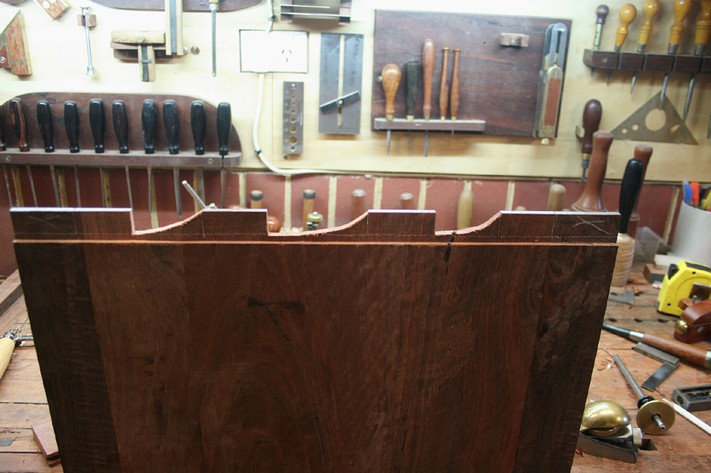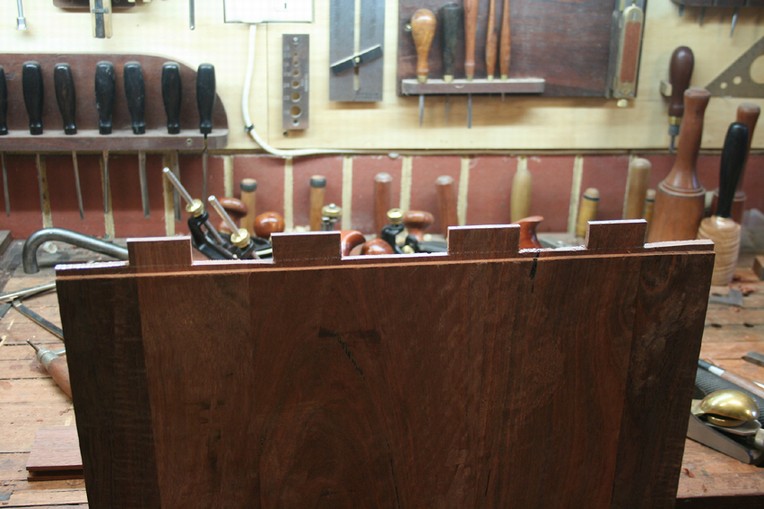I have to learn to walk before I can run. I'm trying to make box joints, dovetails will come later. I wasn't quite sure how to remove the waste, so I used Google. Found several articles suggesting I use a coping saw. I said "that makes sense, should be easy". Not quite as easy as I thought.
The kerf left by my backsaw is not wide enough for me to get the coping saw blade in turned 90 degrees to the backsaw cut. Without making additional cuts, which to me seems to negate removing waste in this manner, how do I get the coping saw blade turned in the direction that I want to cut?
Or do you know a better, easier way of removing the waste?




 Reply With Quote
Reply With Quote







